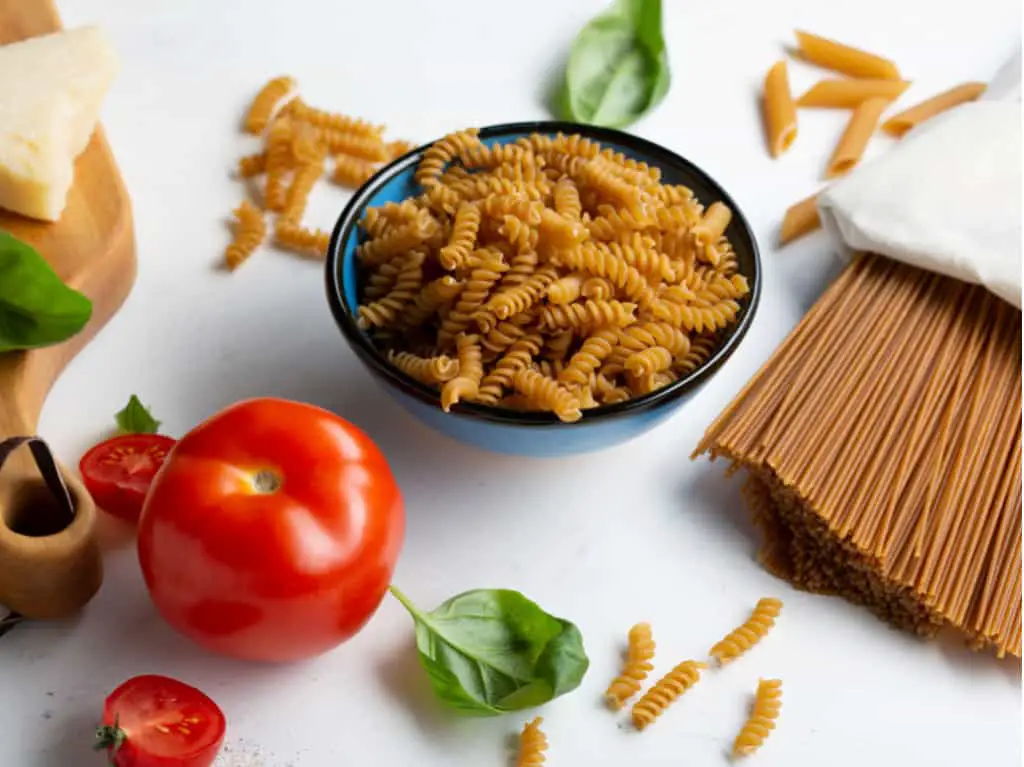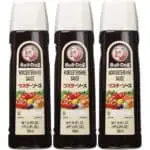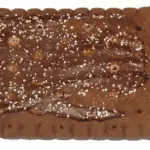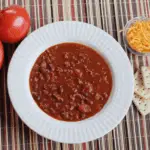Is pasta a whole grain? This is one question that a lot of people have been asking. While some people think that pasta is whole grain because it contains durum wheat, others say that pasta is not whole grain because it has been processed.
So is pasta a whole grain? Pasta is most certainly not a whole grain. It’s a type of food typically made from semolina flour and water or eggs. This is what gives pasta its firm, smooth texture and also the ability to be shaped into different styles like bowties and macaroni.

Pasta is typically made from white flour, which has been processed into a less nutritious type of flour. This is done by removing the outer layer of bran from the wheat, leaving just the inner core.
No, Pasta Is Not A Whole Grain
Pasta is not a whole grain. What is a whole grain?
Whole-grain foods are foods made from 100% whole grain.
100% whole grain contains all parts of the kernel, including the bran, the germ, and the endosperm.
Pasta, on the other hand, is made from refined white flour.
Refined means that the germ and bran are removed, leaving just the carbohydrate-rich endosperm.
Because of this, pasta does not contain any dietary fiber or essential nutrients, including iron and B vitamins.
In addition to being refined starch, pasta is also a processed food—the germ and hull have been removed from the grain to give it longer shelf life.
Is Pasta A Grain Or Starch?
Some people think that pasta is a kind of grain or starch, but it’s actually a type of food.
Grain is the name for the seeds that are found in many plants, including wheat, rice, corn, barley, sorghum, and oats.
When grains are processed to make foods like pasta or bread made with grains, they are no longer whole grains.
But what about starch? Starch is found mainly in corn and potatoes, but it can also be found in other types of foods like wheat flour, peas, beans, lentils, squash, and yams.
Pasta is also a processed food—the germ and hull have been removed from the grain to give it longer shelf life. So just remember: pasta is not a whole grain!
What Kind Of Pasta Is A Whole Grain?
Though pasta is not a whole grain, there are some whole grain pastas that you can find in the supermarket.
You’ll need to do some research to determine which brands of pasta contain 100% whole grain and check their labels carefully for ingredients.
It’s also important to know that many foods made with 100% whole grains will list whole wheat flour or another whole grain as the first ingredient on the label.
A Few Tips On How To Select Pasta And Other Grains
- When buying processed foods like pasta or bread that contains processed grains, read the label carefully for ingredients.
- Choose whole-grain pasta that lists 100% whole wheat flour or another type of whole grain as the first ingredient on the label.
This will help you avoid foods that contain refined white flour or wheat flour, both of which are not whole grains.
How Can You Tell If Pasta Is Whole Grain?
Pasta is not a whole grain. But to tell if the pasta has whole wheat or other grains, look at the ingredient label to see what’s listed first on the list of ingredients.
The first item listed is what makes up most of that food and is found in the greatest amount. For example:
- Whole wheat flour (not whole grain)
- 100% whole wheat flour (this is a whole grain food)
- Enriched durum wheat flour (this means it’s refined white flour where the bran and germ have been removed, which means it’s not a whole grain food).
Is Whole Grain Pasta Healthier Than Regular Pasta?
Whole grain pasta is more nutritious than white pasta, but it’s important not to go overboard on the amount of pasta you eat.
To meet your daily healthy eating goals, about half of your plate should be filled with fruits and vegetables.
The other half of your plate should have a serving of whole grains or another type of starchy food, like pasta.
If you eat too much-refined starch and sugar in your diet, it can lead to weight gain.
That’s why adding foods with high amounts of fiber from whole grains helps balance blood glucose levels and promotes good digestive health. And a healthy digestive system is key for a healthy body!
Does Whole Grain Pasta Taste Good?
Whole grain pasta doesn’t necessarily taste better than refined white pasta.
But whole grains can add new flavors to recipes, and some people say that whole grain pasta tastes nutty or more earthy.
It’s more important for you to enjoy the foods you eat, regardless of whether they’re made with whole grains or not.
It’s important to remember that whole grains and refined grains don’t have a strong flavor on their own, and they can take on the flavors of whatever you cook them with.
Is Pasta Fattening?
Pasta, whether it’s made with whole grains or refined flour, can be part of a healthy diet. But like anything else you eat, too much pasta will make you gain weight, and it doesn’t necessarily mean that they’re fattening.
What happens if we eat more calories than we need? We’ll gain weight.
So if you need to lose weight, try limiting your pasta intake to one or two times per week.
It’s not an easy thing to do, but if you want to eat healthier, it might be necessary.
Conclusion
In conclusion, pasta is not a whole grain! It may have whole wheat or another type of grain in it, but pasta is still refined white flour that’s been processed.
So if you’re looking for 100% whole grain pasta, make sure to read the label carefully or do research online!
































